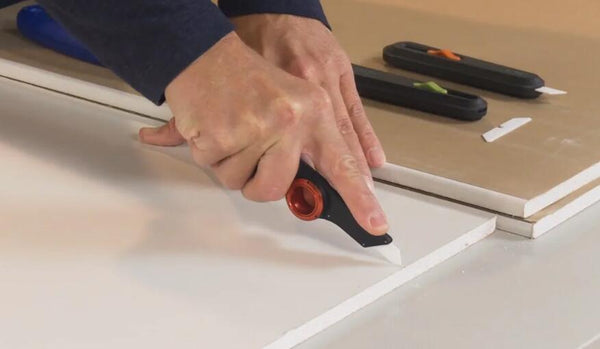
"Three sheets. Three. Freaking. Sheets. That's how many I wrecked trying to cut a simple rectangle for a light switch," says Mike from Ohio, echoing the silent scream of every DIY newbie. If you’ve ever stared at crumbled edges or jagged outlet holes thinking "Why is this so hard?!"—congrats, you’re officially part of the club.
But here’s the kicker: Cutting drywall isn’t rocket science—it’s cheesecake science. Press too hard? It crumbles. Use the wrong tool? Hello, dust tornado. Let’s fix this mess with a 2025 twist.
Tools of the Trade: 50 Game-Changers
PSA: Your grandma’s butter knife won’t work here.
1. Utility Knife (15)
- Pros: Cheap, precise for straight cuts.
- Cons: Requires multiple passes (yawn).
- 2025 Upgrade: Try DustShield blades (cuts cleaner than a TikTok influencer’s caption).
2. Jab Saw (20)
- Pros: Muscle through curves like a boss.
- Cons: Creates more dust than a Sahara Desert rave.
- Pro Hack: Wrap the blade in painter’s tape—boom, less tear-out.
3. Oscillating Multi-Tool (50)
- Pros: Cuts outlets faster than you can say "Why didn’t I buy this sooner?"
- Cons: Overkill for small jobs.
Tool Face-Off:
"Choosing between a jab saw and utility knife is like picking pizza toppings—depends on the job. Need speed? Go electric. Precision? Blade life."
Step-by-Step: Measure Twice, Cut Once, Cuss Never
Step 1: Measuring Hacks for Perfect Cuts
- Pro Tip: Mark lines with a red chalk (shows up on white boards better than your ex’s red flags).
- Avoid the "Oops": Add 1/8" margin for screw holes—drywall expands like your jeans after Thanksgiving.
Step 2: Cutting Around Outlets—No More Guesswork!
- Trace the box with a drywall router (2025’s secret weapon).
- Score lightly—think "petting a nervous Chihuahua" pressure.
- Snap toward the front side to prevent paper tearing.
Visual Aid Suggestion:
Insert image: "Angle your blade at 45°—the sweet spot between ‘slicing butter’ and ‘murdering the board’."
3 Pro Tips That’ll Make Your Contractor Jealous
- The Rasp Trick: Use a drywall rasp (a $6 lifesaver) to smooth edges—it’s like an eraser for your mistakes.
- Dust-Be-Gone Hack: Attach a shop vac hose to your tool with duct tape. Dust reduction: 90%. Regrets: 0.
- The Cheesecake Rule: Score your line as gently as slicing dessert. "Pressure is for gym workouts, not drywall."
FAQ: Answering the Questions Google Won’t Tell You
Q: How to cut drywall without dust?
A: Use a DustBuster Blade (2025’s viral TikTok tool) or stick a magnet to your saw to catch debris.
Q: Best angle to cut drywall?
A: 45° with the blade—like handshaking the board, not stabbing it.
Real-Life Horror Stories
(Learn from these nightmares so your wall doesn’t end up on @DIYDisasters*)*
- The Overzealous Newbie: Jake tried cutting with a steak knife. His security deposit? Gone.
- The Dust Apocalypse: Sarah skipped the mask. Let’s just say… her sneezes turned Gothic gray.
Final Thought: You Got This!
Cutting drywall is 10% skill, 90% knowing the tricks. And hey—if all else fails, just remember: Spackle covers a multitude of sins.
